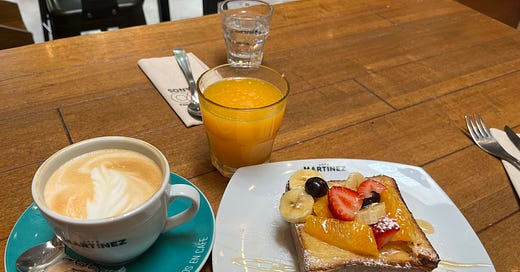I didn’t know much about Buenos Aires before we came, not really. I mean, I know some Argentinian history from my Latin American studies days and I know the economy is (seemingly always) in turmoil, but I otherwise arrived with a relatively blank slate in terms of expectations. The first thing that surprised me is just how big Buenos Aires is; it’s a massive city comprised of many different neighborhoods, similar to those in San Francisco or perhaps even the boroughs of NYC, though certainly those are larger. Here’s an interesting visual comparison; I can’t vouch for how accurate it is.
The city is completely flat and the architecture is quite reminiscent of Western Europe, which is no surprise considering it was flooded with European immigrants, especially from Spain and Italy. Neighborhoods are full of individual shops and restaurants, also like in Europe. You won’t find big box stores (no Ikea here!) and the only chains that exist are local ones.
What this means is that there are unique cafes on virtually every block. You can go to a different cafe everyday and never get bored. In fact, that’s what Natasha and I* started doing, though she took some convincing because she really liked the first cafe we went to and kept wanting to go back. We did, a few times, until I said enough! Since then, we’ve been to a handful of cafes, all within walking distance of where we’ve first stayed. They all have wifi, delicious pastries, menus with varying offerings, a lovely ambiance and, of course, coffee (more on that below). You can stay for hours because no one rushes you. In fact, good luck getting the bill and paying; it can take a while. Bring a laptop and/or a book and settle in.
You won’t find prices on the printed menus, if they even have printed menus. That’s because they go up constantly, so menus are available via QR codes where prices can be easily kept up to date. Some menus are in English as well as Spanish, but most are just in Spanish, so you may need Google if your language skills are rusty. I’ve even had to look up plenty of things simply because I wasn’t familiar with particular menu items, but almost everything we’ve had has been tasty. We’ve even seen a good selection of gluten free items, not that we need them at the moment, but I’ve taken note. Here are some of the cafes we’ve tried, in the order we’ve liked them best.
Chef Leon (@chefleon.resto) — this cafe had a pretty robust menu of breakfast/brunch and lunch items, as well as fresh juices and smoothies, plus coffees and desserts. They also had an excellent selection of GF items. Natasha and I shared a burger and an açaí bowl. Both were good, but the açaí bowl was great. I then had a cappuccino and alfajor to follow and she had the dessert in the photo. The only thing I didn’t particularly care for was the cappuccino, pretty as it looked.
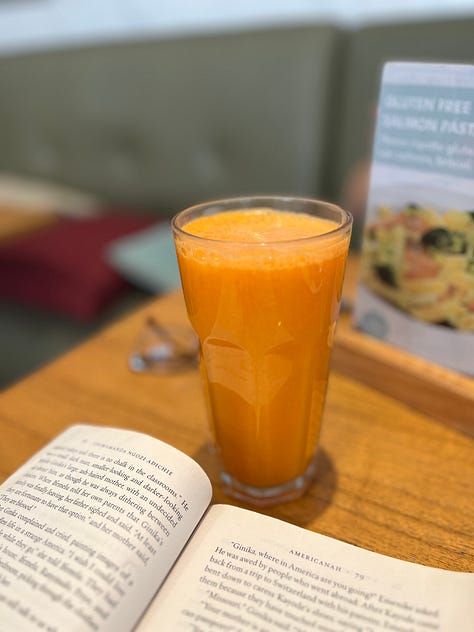
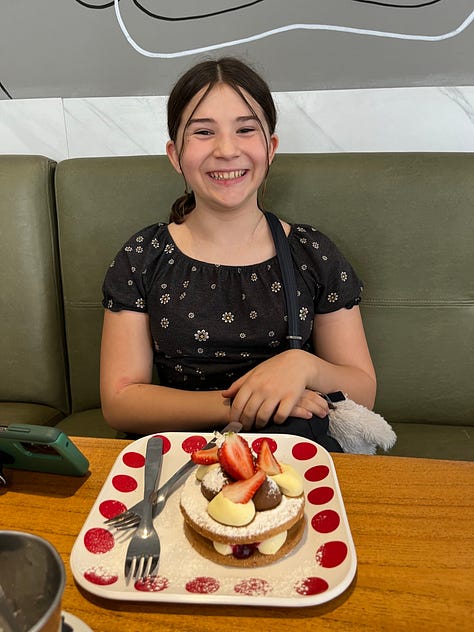
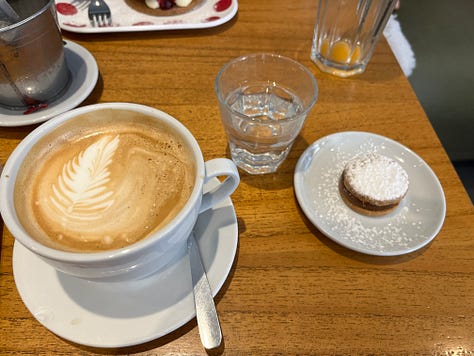
Kopi Cafe (@somoskopi) — they have a decent set of breakfast/brunch offerings, including avocado toast on sourdough, plus some sandwiches + light lunch options, as well as pastries and coffee, but their menu isn’t extensive. Still, the atmosphere is nice (and pet friendly) and the coffee is fine. I’ve gotten scrambled eggs and toast, plus coffee. I’ve also gotten a savory tart and a fruit smoothie. Natasha had a pulled pork sandwich one day that she really liked and we’ve both tried the avocado toast with a soft boiled egg on top. This is the cafe we’ve been to the most; I think they have a few locations.
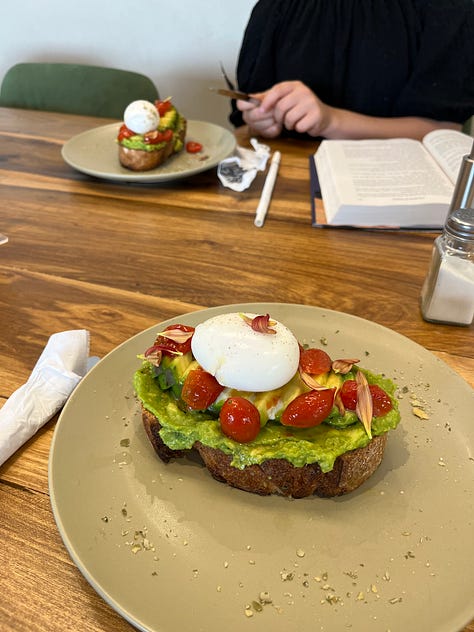
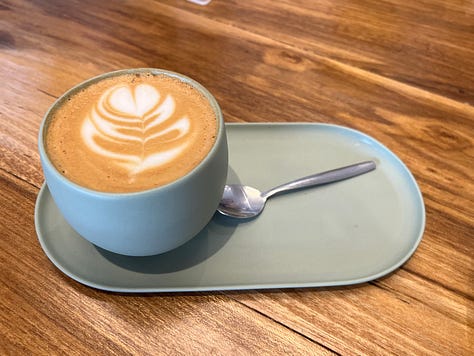
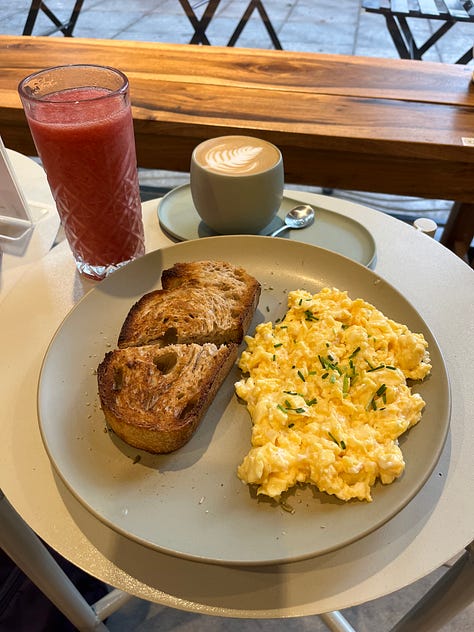
Gontran Cherrier (@gontrancherrierar) — this is predominantly a French cafe with breads, pastries, and coffees, but it also has a nice light breakfast and salad/sandwich menu. I’ve gotten the pre-fixe breakfast menu that includes a bowl of yogurt topped with granola and fresh fruit, coffee, and orange juice; it was yummy. I’ve also gotten a chocolate cookie and Natasha has gotten a pastry, plus a mozzarella sandwich and smoothie, as well as avocado toast. Their flat white was fine; the iced coffee (a latte, if I remember) was not good; it was bitter. But we like the ambiance and food enough that we’ve gone a couple of times. They have several locations.
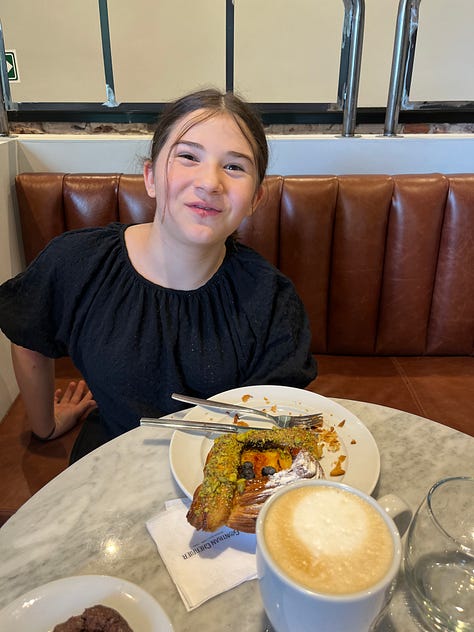
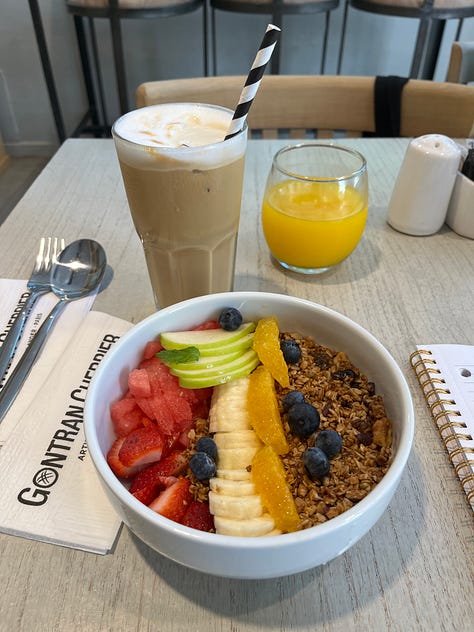

Foret (@foret.bsas) — they have a fairly large menu and their interior was nice, but the food was just so so. Natasha and I split a napolitana pizza; it was good, but it had very thick bread/crust, which isn’t our preference. We also split some pesto pasta that was not good at all. I mean, it’s hard to mess up pasta, but the dish somehow had no flavor. Even the shredded cheese they gave us to put on top didn’t help. (Side bar: Cheese in Buenos Aires is mostly not good, at least that we’ve found. It’s rubbery and lacks flavor. Perhaps we just need to know a better place to buy it.)
Cafe Martinez (@cafemartinezoficial) — this turned out to be a rather large chain across the city; we didn’t realize that until we looked it up afterward. It was kind of the opposite of Foret in that its interior lacked personality and character (it almost felt like we could’ve been in any generic urban coffee shop in the US, except they spoke Spanish so quickly that I had a hard time understanding and had to ask for things to be repeated, multiple times; ha!) but the food was decent, if unremarkable. N and I had popped in because we saw a sign outside promoting French Toast with honey and fruit on top, so that’s what we ordered, along with a side of scrambled eggs. The food was fine — not exceptional, but not bad either. Although, their coffee was perhaps the best I’ve had so far. And they sell bags of ground roasted beans, so I’ve made a mental note that this could be worth going back for. (More on coffee quality below.)
Cosecha (@cosechaok) — they have a lot of natural products they also sell, both food and body products. But we went for breakfast and found that they had quite a limited menu. We both got toast with cream cheese and jam (very common here), plus I had coffee and Natasha had orange juice. We tried to order a smoothie but they couldn’t make it and we tried to order a side of scrambled eggs, but the power went out and so they couldn’t cook anything. Even so, the server wasn’t friendly. It was noticeable since everywhere else has been quite friendly and more than willing to explain things to us when we had questions. Not so here. That’s their prerogative, but we won’t go back.
Bonus cafe outside of our area:
Martinelli (@martinellicaffe) — this place was so cute! We stopped in to kill time on our first day in Buenos Aires while we waited for our AirBNB to be ready. They had delicious pastries/desserts and pretty good coffee. We’ve been meaning to go back or try one of their other locations (I think they have five), but we haven’t yet. The servers were so nice.
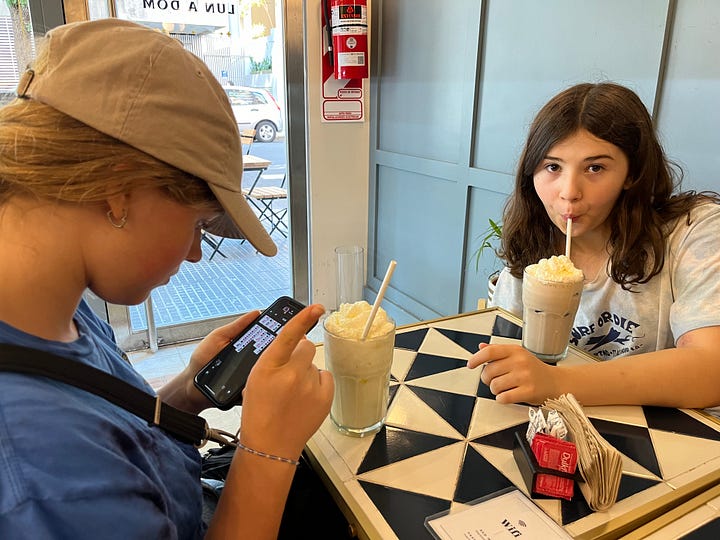
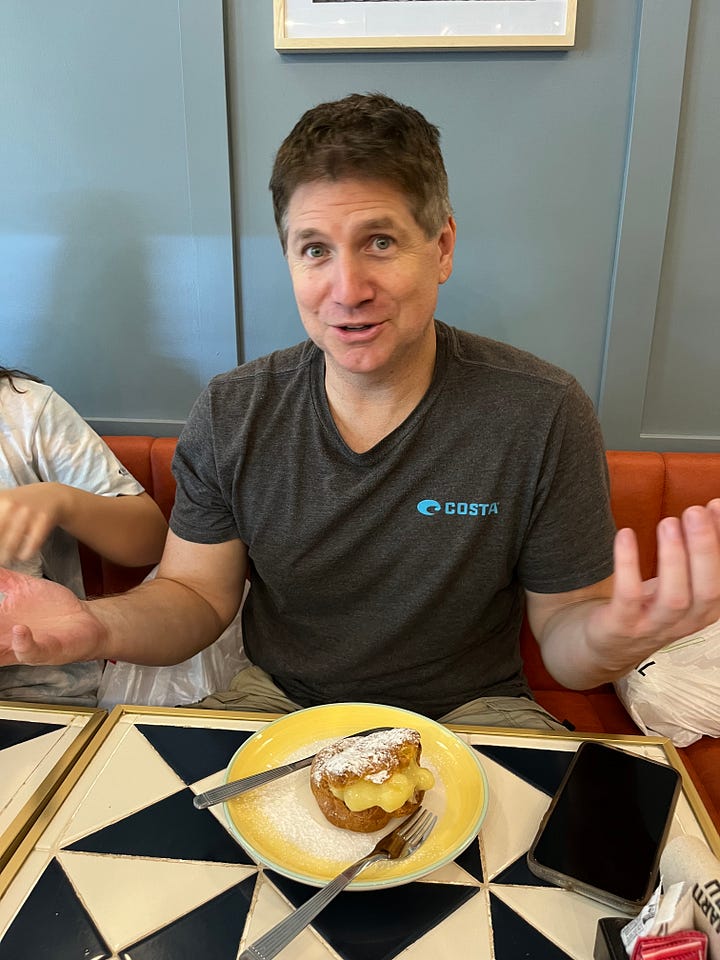
Okay, let’s talk about coffee in Buenos Aires — and other parts of South America, where apparently using cafe torrado has been the longstanding practice. (Google it; I’d include a link, but everything is coming back in Spanish at the moment.) This is a process where inferior coffee beans are roasted and sugar is added during the roasting process to mask the poor bean quality. Why? Supposedly it helped preserve the coffee given the long distances it needed to be shipped. Whatever the real story is, I can attest that much of the coffee I’ve had so far is not as good as what you get in the US or other parts of the word.
Since I stumbled upon this knowledge ahead of time, I brought a nice stash of Ozo Coffee with me that I had delivered to California before we headed out. So I’ve had at least one good cup of coffee a day that I make in my Aeropress, which I also ordered on our stopover in California. Many people in the worldschooling and digital nomad community travel with one and I thought it was ridiculous, but after our first leg of travel through Europe and Asia, I realized the value of having a consistent way to make coffee while traveling and this definitely delivers. So, yes, I’m a convert.
While the coffee has been disappointing overall in Buenos Aires, I still love the cafes and think you would, too, so don’t let any of this get you down. I’ve heard you can buy the good kind of beans at certain coffee shops to make at home. Cafe Martinez could be a good spot to try.
What places around the world have you found fun cafe culture in? Which country has had the best coffee? Do you have a favorite cafe you’d like to share?
*It was just Natasha and I exploring cafes because Chris and Shelby decided to try the carnivore diet given how readily accessible and affordable red meat is in Argentina. So while Natasha and I were out living our best cafe lives, Chris and Shelby were subsisting off of meat, chicken, fish/seafood, plain yogurt, and cheese. It got very boring, but they did it for a week. Impressive!

